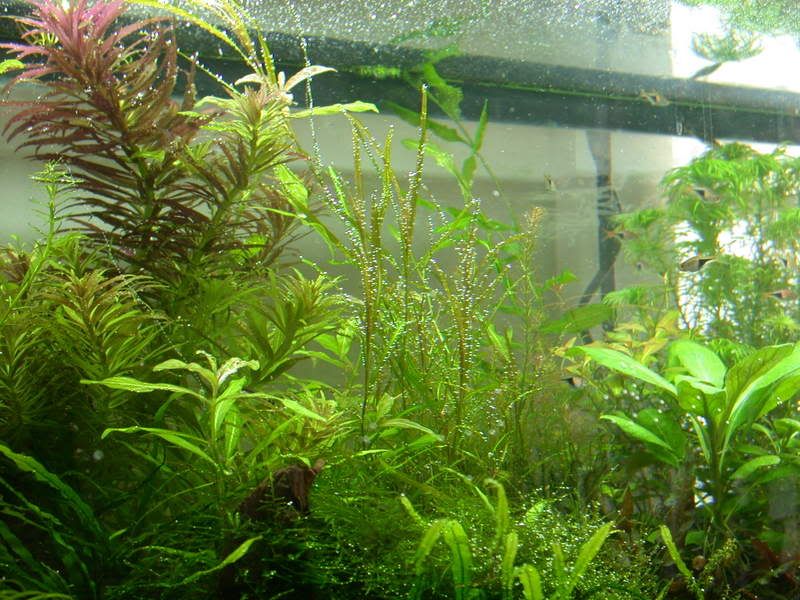I'll start off by showing my previous tanks.
This tank was done in a low tech, low light, zero water change style. It had the barest minimum of lighting for the plants health, needed very little in added nutrients beyond fish waste, and only required water changes when the substrate was disturbed.
The equipment was removed for this photo, but only consisted of a hang on the back filter and a heater.
Although the plants lived and grew under the low lighting, they were never able to thrive to the point that I could shape them as I wanted.
At the time of this picture, the inhabitants were a male Betta splendens (siamese fighting fish), a Corydoras pygmaeus (pygmy cory), and a Parotocinclus sp. (pitbull pleco) along with numerous snails.

This tank was done in a high tech, high light style. It featured compact fluorescent lighting, injected CO2, and a canister filter. I used what is called the EI method, which basically means relatively large additions of nutrients are added daily, along with a weekly water change of %50 to disallow the levels of those nutrients to reach levels toxic to the fish.
At the time of this picture, the inhabitants were 11 Trigonostigma heteromorpha (harlequin rasbora), 5 Otocinclus sp. (Oto catfish), 5 Corydoras reticulatus (network cories), 3 Crossocheilus
siamensis (siamese algae eater) and a Cardina japonica (amano shrimp) as well as countless tiny snails.
Look out for this tank in the upcoming Aquatic Gardeners Association and Aqua Design Amano competions!





